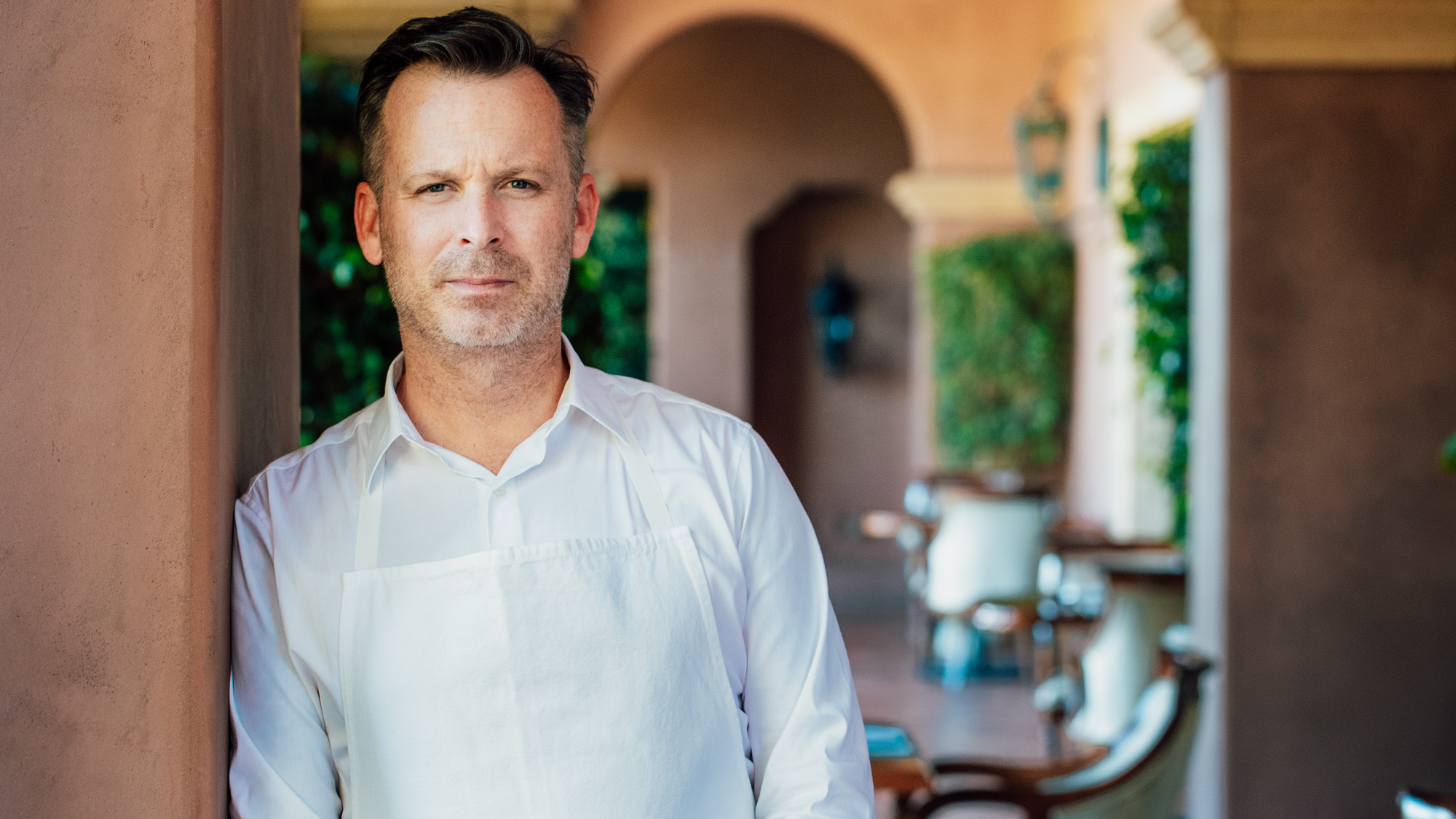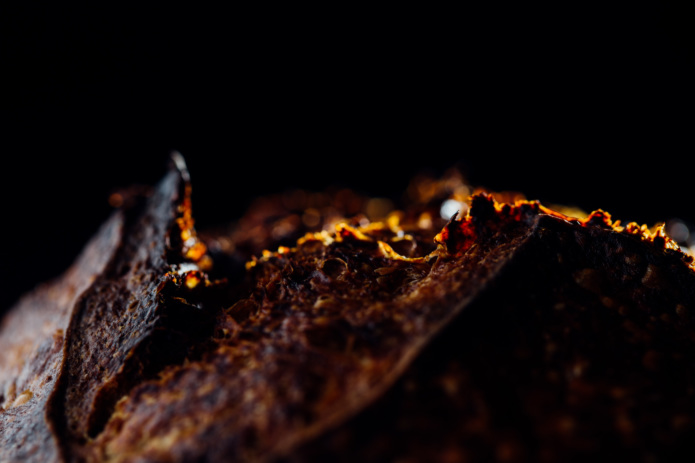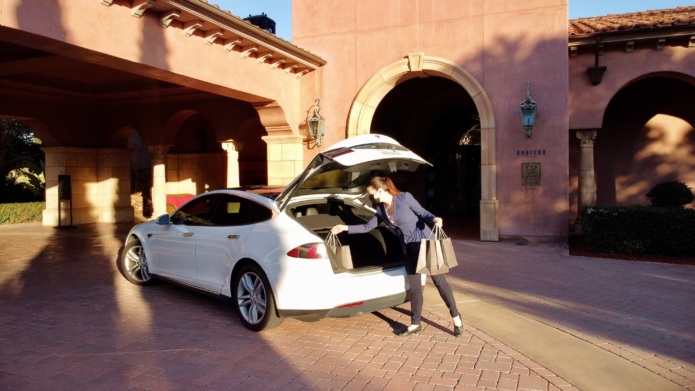
Michelin-Starred and Trying Takeout? San Diego’s Addison Is Up For It
After closing for a few months in 2019 to overhaul Addison, long considered one of the best restaurants in San Diego — even before it garnered the area’s only Michelin star — chef William Bradley was excited to begin a new journey. He’s been at the helm since 2006, and over the years, his refined tasting menus and molecular presentations, formal atmosphere, and excellent service have garnered various awards and nominations. But moving into a new decade, it was time for a new chapter.
The restaurant reopened in January 2020 with a new look and vision, only to shut down again a few weeks later. Thanks to the pandemic, plans for Addison 2.0 were put on the back burner.
It’s a story we’ve now heard around the country for much of the last year — the opening and closing of dining rooms, rejiggering of menus, furloughing staff, all in an effort to stay afloat until the world gets a handle on COVID and its aftermath. And like most chefs, Bradley had to pivot to something completely different from what the restaurant was known for: takeout.
For the first time in Addison’s 15-year history, instead of 10-course tasting menus, the chef and a small team switched to approachable four-course menus with dishes like wild mushroom soup, sourdough boules with honey butter, braised short ribs, and potato puree. To Bradley, it’s the kind of food you’d want any night of the week, not just a special occasion. The Addison at Home menu is his answer to the daily question of “What are we eating tonight?”
So far, it’s working. The takeout menu has been a hit with both resort guests and locals, and it’s given the chef a new appreciation for the simple things in life — and his kitchen. We asked him about the resiliency required to change gears during the pandemic, about finding his voice, and looking ahead to what’s next.
Resy: What was happening at Addison right before the pandemic hit?
William Bradley: We did a really nice facelift to the restaurant, lightened it up with different tones and textures; focused on a more feminine look. And with that, we brought our cooking style in a different direction. Addison was always known for its contemporary French cuisine. Over the years, I reflected on being inspired by local seasons instead of composed dishes.
Our R&D became more and more influenced by where we’re located instead of just what we knew. Regional-style cooking and sense of place has always been important to me, but being here in Southern California, so many things can influence your food. Latin flavors, Japanese, Filipino elements of taste could all trickle in. So I felt like it was time to get more focused on creating our own voice, our own branded style of cooking. We called it California gastronomy. Now we just infuse California in a way that makes it feel more natural, not forced. We were immersed in it at the beginning of [2020]. It started to feel great. And then we were dealt the hand of the pandemic.
Did the pandemic influence where you were going with the menu?
We’ve always done tasting menus. That’s the fabric of what we do. That’s the direction we’ve always been in, and we’ll continue to go in that direction, and challenge ourselves in that style of dining. Even if it’s a multicourse meal for takeout.
How did you come to the conclusion that you needed to do takeout vs. say, stay closed and weather the storm? Did you have an option, being Addison is located in a resort?
We are a standalone restaurant, a separate building, on the grounds of the Fairmont Del Mar. But we run and operate it with the mindset of an independent restaurant. The first shutdown, five months in, we thought like everyone else that we could get through this if we all just stick together. Then we opened with our patio throughout much of the summer, and it felt good. We were hitting a groove.
The second shutdown in December, when all in-person dining was closed throughout California, I just needed to make sure I could keep the team together as much as possible. That I could continue to foster the relationship with our purveyors, and the rest of the staff, too. So our only option was takeout. It’s been a lot of fun. It’s been interesting.

How do you turn a 10-course Michelin-starred meal into takeaway? Are instructions for enjoying at home easy?
That was the main thing. We didn’t want to confuse the two. We didn’t want the reputation of the food to change, but we wanted to do something more approachable. I know some chefs have been successful at doing big menus for takeout. But I wanted something our guests would get once or twice a week. This was more about doing something we haven’t done before, something more fun. Our full tasting menu wouldn’t travel well, and I didn’t want to make it complicated for people at home. Sous vide this, cook that. We wanted to make something that they could eat even in the car.
Right. After all, how do you compete with pizza and fried chicken?
We want to do food like that, too! Well, I don’t think we’ll get to fried chicken. Maybe? Pizza, no. I’ll never try my hand at pizzamaking and pretend we know how to do it. I think pizza is the hardest thing to do. I never want to do sushi or something so specialized.
What are some highlights from the current takeaway menu?
Because of the time of year, we’ve been having fun with soups and salads. We did a mushroom soup recently that was popular. Last week we did a white bean soup with Calabrian chilies and kale. It’s very similar to what I eat at home. In fact, some of my dishes have been inspired by my wife, and things she likes to make.
Can you see continuing takeout or some of these dishes even after the pandemic?
Yes, totally. All you have to do is give it a level of refinement. That’s one thing we’re really going to focus on when we emerge from this pandemic. Our number one goal is to do things that no one else is doing, to create our own voice, and really pride ourselves on that. So if it is doing a really beautiful white bean soup and something with Calabrian chilies, for sure. Maybe you wouldn’t see that somewhere else. Maybe you serve it with crispy kale chips on the side. You don’t have to always rely on luxury items to make it feel like fine dining.

In what ways were you able to encourage and protect the staff during all the transition?
Continuing to serve food feels like you’re willing to pivot and be part of the solution. With that, I’ve done all I can to support staff and their safety. I’m not going to be upset that we can’t eat outside yet. All I can do is try to protect people’s health and well-being, and stay optimistic.
What have you learned about your cooking, and your resilience as a chef, since the pandemic began?
We’re such resilient people, right? We’re survivors. I’ve just tried to continue to focus on the basics and find satisfaction in that. That there’s only five of us in the kitchen now means we wash the dishes, scrub the floor, we sweep. I’m actually enjoying that. It’s getting back to the basics again. I have a newfound appreciation for all the people who work so hard to make Addison special. I don’t want it to get back to normal. What was normal before wasn’t sustainable. We need to be less egotistical and more balanced. Find more sense of community.
What do you miss most about restaurants being open?
I miss the human connection. Where someone can come in and celebrate something, and they sit back and relax, and we take care of them. That human touch. We can really change someone’s day in three hours. I miss that. I miss supporting restaurants as well, experiencing a different chef’s philosophy and style. I really like to see a chef’s personality in their food. I know a lot of things will change, but hopefully things will look brighter.















